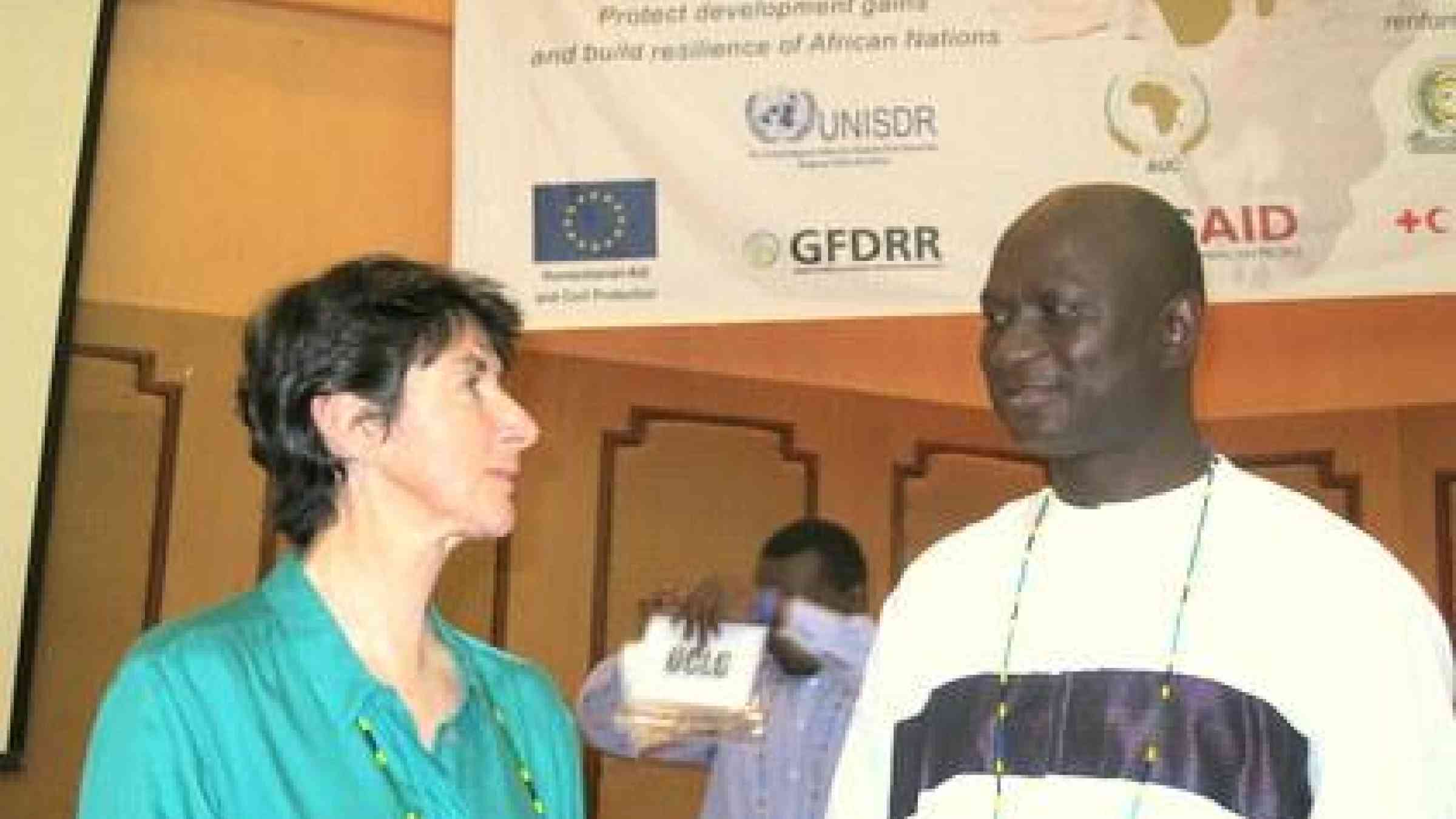Disaster risk is transforming African cities

ARUSHA, 15 February 2013 - Risks that have historically played out in rural areas like drought, floods and wildfires "are being transferred and transformed and expressed differently across Africa's fast growing cities and towns," said Dr. Ailsa Holloway in her keynote address to the 4th Africa Platform for Disaster Risk Reduction today.
Dr. Holloway who oversees Disaster Risk studies at South Africa's Stellenbosch University, said Africa's urban population is expected to be 60% of the total population by 2050 and some countries will reach this by 2030.
"Urban risk management in Africa is simply not up to speed. It is unrealistic to expect our national disaster management authorities to have capacity to address nationwide concerns simultaneously with those faced by large cities and towns," she said.
The urbanization of risk manifests itself in the case of drought in water scarcity when reservoirs run dry due to diminished rainfall and poor water demand management due to the pressures of urban growth, she said.
"Urban fire is devastating and a poorly understood and weakly managed risk across the continent, while new forms of rising flood occur in our growing cities due to unplanned settlement and weak urban infrastructure. Food insecurity in cities generates multiple challenges."
Dr. Holloway spoke about the "large youth dividend" in Africa which was largely untapped due to dismally low enrollment in high schools, for example in southern Africa where it is 30% or lower in some countries and the majority of youth are unemployed.
"An inescapable reality of an increasingly urban continent --especially one with so much poverty and structural inequality -- is the likelihood of social violence and conflict. While one might argue that this is not the core focus of disaster risk reduction, shortcomings in service delivery, rising food prices, unemployment and political intolerance can trigger social unrest.
"Community based disaster risk reduction in tense urban contexts can play an important role in addressing other forms of tension that have potential to bring harm and loss."
Dr. Holloway said: "One of the most amazing aspects of urban risk is its sheer dynamism. There are always new configurations of risk. For instance, last year in Luanda, over 20,000 people were reportedly bitten by rabid dogs and illustrating the often nuanced nature of emerging risk -- those most vulnerable were 5-9 year old boys."
Urbanization is also being marked by shorter return periods for major disaster events. "This means that prospects for recovery and resilience building are undermined because there is simply insufficient time between shocks." She cited the example of the Malawian capital and district, Lilongwe, which experienced 36 disaster shocks of national significance, mainly floods, from 2000-2012. "This is more than one every six months," she noted.
Africa is becoming increasingly interconnected and the 2008-2009 cholera outbreak across urban areas in southern Africa was one illustration of how urbanization can facilitate the spread of disease. This supported the argument for closer integration of health-related issues into disaster risk reduction and a clear focus on health in the global framework for disaster risk reduction which will succeed the current Hyogo Framework for Action in 2015.
Jakob Wernermann, UNICEF focal point for disaster risk reduction in west Africa, told the Africa Platform that addressing the vulnerabilities for women and children in urban areas was a cornerstone of UNICEF's efforts to reduce urban disaster risk.
Almost half the children in Africa live in cities and towns and 60% live in slums where essential services such as electricity, clean water and health care are unavailable to them.
"And too many of these children live under the most challenging conditions -- in ramshackle dwellings and overcrowded settlements that are acutely vulnerable to disease and disaster," he said, citing as an example, the growing number of urban dwellers practicing open defecation as sanitation solutions fail to keep pace with rapid population growth.
Dr. Robert Kiunsi, Director, Disaster Training Management Centre, Ardhi University, Tanzania, also cited rapid urban growth as a challenge for disaster management as Dar Es Salaam is predicted to grow from four million people today to ten million in just twenty years time.
"Already 60% to 75% of city dwellers live in unplanned areas. Only between 50-60% are connected to the piped water supply. Only 40% of the generated solid waste is collected and safely disposed. Storm water drainage is poor and road networks are not to a good standard," he said.
He pointed out that despite a backdrop of increasing floods linked to intense rainfall there was still no inclusion of disaster risk reduction and climate change issues in city development plans.
Youcef Ait-Chellouche, climate change focal point for UNISDR in Africa, told the meeting that climate change posed a greater threat to Africa than any other region because of the disruption it was creating in weather patterns. This has become particularly noticeable over the last 15 to 20 years.
"The integration of disaster risk reduction and climate change adaptation are key to the future of Africa and sustainable development," he said.